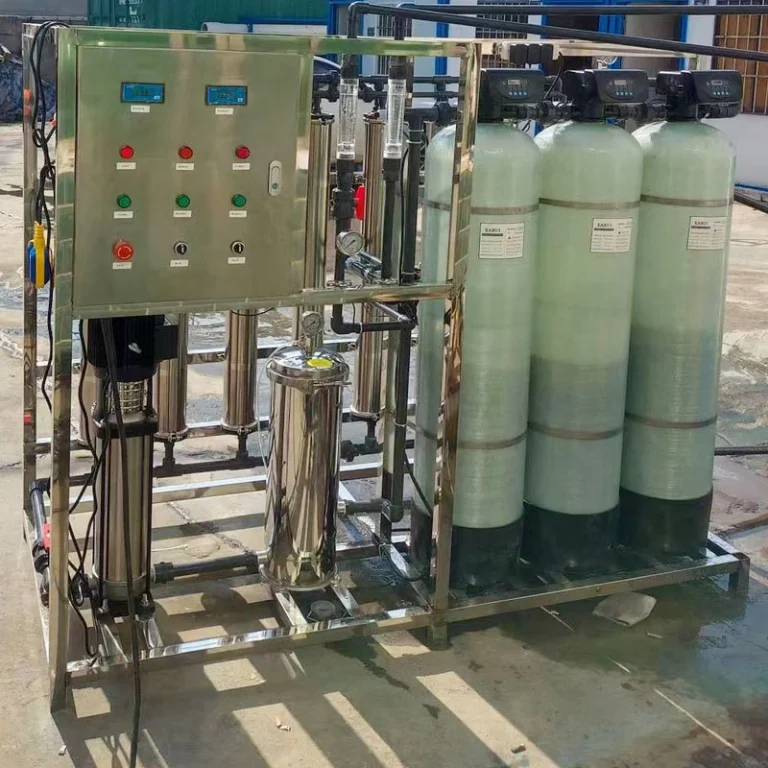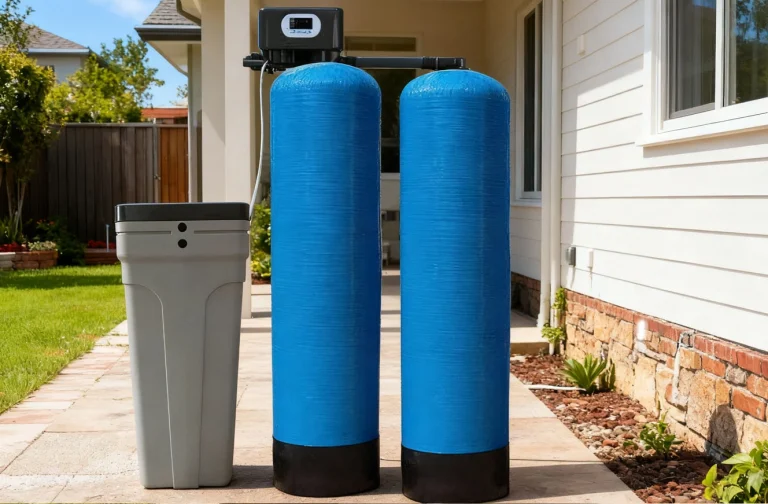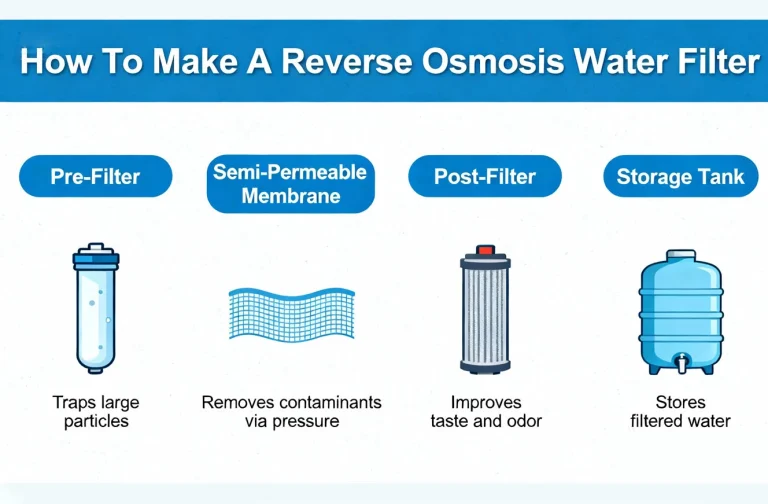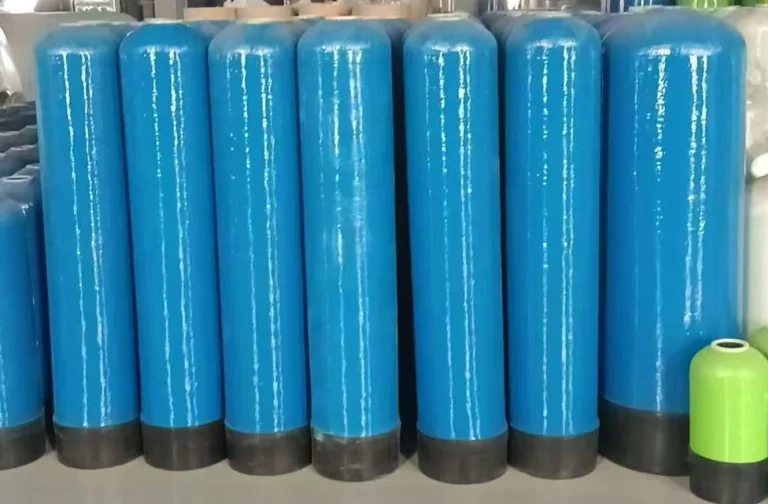BasideWT- Whole Home Water Filtration System & Replacement

Which Filtration Material Leads to the Best Drinking Water?
Everyone wants clean, great-tasting water. But with so many filters available, how do you choose? The answer lies in the filtration material inside. Different materials target specific contaminants.
No single material is perfect for every situation. The “best” material depends on your water quality. Your budget and needs also play a big role. This guide will help you understand your options.
We will explore the top filtration technologies. You will learn how each one works to clean your water. This knowledge will help you make a smart choice for your home.
Activated Carbon: The All-Round Performer
Activated carbon is one of the most common materials. It is made from organic substances like charcoal or coconut shells. This material is treated to create millions of tiny pores.
These pores trap a wide range of impurities. They are excellent at removing chlorine. This improves the taste and odor of your water. Carbon also filters some chemicals and pesticides.
It is affordable and widely available. You find it in pitcher filters, faucet attachments, and under-sink systems. However, it is less effective against heavy metals or dissolved salts.
How Activated Carbon Works
The secret is a process called adsorption. Contaminants stick to the surface of the carbon particles. The large surface area makes this very effective.
It works like a sponge soaking up impurities. Chlorine molecules get trapped in the tiny pores. This removes the chemical taste from your water. Organic compounds are also captured this way.
Reverse Osmosis: For Maximum Purity
Reverse Osmosis (RO) uses a semi-permeable membrane. This membrane has extremely tiny pores. Water is forced through it under pressure.
Most contaminants cannot pass through. RO systems remove up to 99% of dissolved solids. This includes heavy metals like lead and arsenic. They also remove salts, fluoride, and many viruses.
RO provides exceptionally pure water. The main drawback is that it wastes some water during the process. It also requires more maintenance than simpler filters.
The Multi-Stage Filtration Process
RO systems are never used alone. They always include pre-filters and post-filters. A sediment filter usually comes first. It removes dirt and rust particles.
An activated carbon filter often comes next. It protects the RO membrane from chlorine. After the membrane, another carbon filter may polish the water. This improves the final taste.
Tackling Hard Water
Ion exchange is best known for water softening. It specifically targets hardness minerals like calcium and magnesium. These minerals are exchanged for sodium or potassium ions.
This process prevents scale buildup in pipes and appliances. It makes water feel softer on your skin and hair. Many people prefer the taste of softened water.
Specialized ion exchange resins can also remove heavy metals. They can be programmed to target nitrate or arsenic. This makes them a versatile tool for water treatment.
How the Ion Swap Works
The system contains tiny resin beads. These beads are charged with sodium ions. When hard water flows through, the beads grab calcium and magnesium.
They release sodium ions in return. This swap removes the hardness from the water. The resin must be regenerated periodically with salt brine. This recharges the beads for more filtering.
KDF: The Chlorine Specialist
KDF is a granular material made from copper and zinc. It uses a chemical process called redox (reduction-oxidation). This process is highly effective at removing chlorine.
It can also reduce heavy metals like lead and mercury. KDF is often used in combination with activated carbon. This duo creates a powerful filtration team.
You often find KDF in shower filters. It is great for removing chlorine that dries your skin. It also has a long lifespan and doesn’t require electricity.
The Redox Reaction Explained
KDF media triggers an electron exchange. Chlorine is converted into a harmless chloride. Heavy metals are transformed into inert particles.
These particles then get trapped in the filter. The process also inhibits bacteria and algae growth inside the unit. This keeps your filter cleaner for longer.
Infrared and Ceramic: The Natural Cleaners
Ceramic filters have very fine pores. They work like a sieve to block pathogens. Bacteria, cysts, and sediment are physically blocked.
These filters are very effective for biological contaminants. They are often combined with carbon for broader filtration. They are long-lasting and can be cleaned and reused.
Infrared technologies use light waves to alter water structure. Some claim they enhance water’s energy and hydration properties. However, these benefits are not as scientifically proven.
Ceramic’s Micro-Porous Structure
The ceramic material is like a honeycomb. Its tiny passages are smaller than most microbes. Water can flow through, but harmful bacteria cannot.
This makes it excellent for untreated water sources. It provides a reliable barrier against waterborne diseases. It is a simple but highly effective technology.
Comparing Your Options: Which is Best?
The best material depends on your water problems. First, get your water tested. Know what you need to remove before choosing a filter.
For taste and odor issues, activated carbon is superb. For very hard water, an ion exchange softener is ideal. For well water with bacteria, a ceramic filter is great.
For the widest contaminant removal, choose Reverse Osmosis. Often, a combination of materials delivers the best results. Multi-stage systems offer comprehensive protection.







